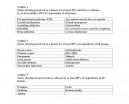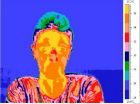(Press-News.org) Lithium restores cognitive function in Down syndrome mice
Down syndrome is a neurodevelopmental disorder that is the leading cause of genetically defined intellectual disability. In the brain, Down syndrome results in alterations in the connections between neurons and a reduction in the development of new neurons (neurogenesis) that usually occurs during learning. In this issue of the Journal of Clinical Investigation, researchers led by Laura Gasparini at the Istituto Italiano di Tecnologia in Genova, Italy report that lithium, a drug commonly used for the treatment of mood disorders in humans, restores neurogenesis in the hippocampus, a part of the brain strongly associated with learning and memory. Lithium also significantly improved the performance of Down syndrome mice in tasks measuring contextual learning, spatial memory, and object discrimination. These results suggest that lithium-based therapies may help Down syndrome patients.
TITLE:
Lithium rescues synaptic plasticity and memory in Down syndrome mice
AUTHOR CONTACT:
Laura Gasparini
Istituto Italiano di Tecnologia, Genova, UNK, ITA
Phone: +3901071781519; Fax: +3901071781230; E-mail: laura.gasparini@iit.it
View this article at: http://www.jci.org/articles/view/64650?key=3cf4232a6447e03ab3e1
Stem cell-derived dopaminergic neurons rescue motor defects in Parkinsonian monkeys
Parkinson's disease is a degenerative disorder of the central nervous system that is characterized by tremors, rigidity, slowness of movement, and difficulty walking. It is caused by loss of the neurons that produce the neurotransmitter dopamine (known as dopaminergic neurons). One of the primary goals in Parkinson's disease research is to develop a replacement for dopaminergic neurons. In this issue of the Journal of Clinical Investigation, researchers led by Takuya Hayashi at the RIKEN Center for Molecular Imaging Science in Kobe, Japan, derived dopaminergic neurons from bone marrow stem cells in monkeys. The cells were retrieved during a standard bone marrow aspiration and then treated with growth factors that directed the stem cells to become dopaminergic neurons. The monkeys that donated the stem cells were treated with a chemical to induce Parkinson's disease and then received a transplant of the new dopaminergic neurons that had been derived from their own bone marrow stem cells. Monkeys that received the transplant showed significant improvement in motor defects. This study demonstrates that dopaminergic neurons derived from adult bone marrow stem cells can be safely used to improve motor function in Parkinson's disease in monkeys.
TITLE:
Autologous mesenchymal stem cell–derived dopaminergic neurons function in parkinsonian macaques
AUTHOR CONTACT:
Takuya Hayashi
RIKEN Center for Molecular Imaging Science, Kobe, JPN
Phone: +81-78-304-7121; E-mail: takuya.hayashi@riken.jp
View this article at: http://www.jci.org/articles/view/62516?key=7d6d0d8317b927dfb1d0
Researchers inhibit plaque formation in a mouse model of Alzheimer's disease
Alzheimer's disease is characterized by the accumulation of protein plaques in the brain. The plaques are generated by BACE1-mediated cleavage of the β-amyloid precursor protein. In this issue of the Journal of Clinical Investigation, researchers led by Weihong Song at the University of British Columbia, demonstrate that the cellular signaling protein GSK3β promoted BACE1 expression and increased cleavage of the β-amyloid precursor protein. Inhibition of GSK3β blocked the formation of plaques in the brains of mice with a genetically engineered form of Alzheimer's disease and improved their performance in memory tasks. These results suggest that drugs targeting GSK3β might be effective in treating Alzheimer's disease.
TITLE:
Inhibition of GSK3β-mediated BACE1 expression reduces Alzheimer-associated phenotypes
AUTHOR CONTACT:
Weihong Song
The University of British Columbia, Vancouver, BC, CAN
Phone: 604-822-8019; E-mail: weihong@exchange.ubc.ca
View this article at: http://www.jci.org/articles/view/64516?key=e6acfc0c1540a1067a3e
Tempering inflammation to treat the flu
Infection with the influenza virus induces an immune response to fight the virus; however, this natural defense sometimes results in excessive inflammation that can damage the lungs. In this issue of the Journal of Clinical Investigation, researchers led by Béatrice Riteau at the University of Lyon in Lyon, France, found that mice infected with influenza A had increased PAR1 activity, a protein that attracts inflammatory cells to the site of infection. To determine if PAR1 plays a role in the damaging inflammation caused by the influenza virus, Riteau and colleagues generated mice that lacked PAR1 or treated them with a drug that blocks PAR1 activity. Interestingly, both groups of mice were protected from influenza virus A infection. This study suggests that drugs that block PAR1 activity might be useful in treating influenza.
TITLE:
PAR1 contributes to influenza A virus pathogenicity in mice
AUTHOR CONTACT:
Béatrice Riteau
Universite de Lyon, INRA (Institut National de la Recherche Agronomique), Lyon, FRA
Phone: 33(4)78771008; E-mail: beatrice.riteau@univ-lyon1.fr
View this article at: http://www.jci.org/articles/view/61667?key=f7e425306056041665a0
Lysosomal disruption targets acute myeloid leukemia cells
Acute myeloid leukemia (AML), a cancer that originates in the bone marrow, is the most common form of leukemia in adults. The disease is very difficult to treat and many patients experience relapses that are likely caused by the presence of chemotherapy-resistant leukemia initiating cells. In this issue of the Journal of Clinical Investigation, researchers led by Mahadeo Sukhai and Aaron Schimmer at the Princess Margaret Hospital in Toronto, Ontario, screened 100 common drugs to identify agents that could kill leukemia cells. They found that the malaria drug mefloquine selectively killed human AML cells and leukemia initiating cells by targeting a portion of the cell known as the lysosome. These results suggest that drugs which target the lysosome maybe useful in treating AML.
TITLE:
Lysosomal disruption preferentially targets acute myeloid leukemia cells and progenitors
AUTHOR CONTACT:
Mahadeo Sukhai
University Health Network, Toronto, ON, CAN
Phone: 416-946-4501 x 3498; E-mail: m.sukhai@utoronto.ca
View this article at: http://www.jci.org/articles/view/64180?key=0c7313028208f101619b
Researchers identify key gene transcription changes in acute myeloid leukemia
Abnormal gene transcription contributes to the pathogenesis of many cancers. CDX2 is a transcriptional regulatory protein that is expressed in the leukemic cells of 90% of acute myeloid leukemia (AML) patients, but the genes that it targets have not been defined. In this issue of the Journal of Clinical Investigation, researchers led by Stefan Fröhling at the German Cancer Research Center in Heidelberg, Germany, report that CDX2-mediated leukemogenesis is dependent on the protein KLF4. Interestingly, the effects of CDX2 on KLF4 are tissue-dependent. CDX2 repressed the expression of KLF4 in AML, but not in other forms of cancer. Additionally, Fröhling and colleagues identified signaling pathways that reactivate expression of KLF4, countering the effects of CDX2. These studies suggest that regulation of KLF4 expression could provide a new therapeutic target in the treatment of AML.
TITLE:
Leukemogenesis by CDX2 involves KLF4 repression and deregulated PPARγ signaling
AUTHOR CONTACT:
Stefan Fröhling
German Cancer Research Center and National Center for Tumor Diseases, Heidelberg, UNK, DEU
Phone: +49-6221-42-1633; Fax: +49-6221-42-1610; E-mail: stefan.froehling@nct-heidelberg.de
View this article at: http://www.jci.org/articles/view/64745?key=98dd7bf0b61b8321a0e3
Gene transcription mediates the production of inflammatory factors during sepsis
Septic shock is a severe systemic infection that frequently results in multiple organ failure. The bacteria that cause the infection drive a sustained inflammatory response that can cause further damage. TNFα is an inflammatory factor that is induced in the liver and is a key determinant of liver failure during septic shock. In this issue of the Journal of Clinical Investigation, researchers led by Guadalupe Sabio at the Centro Nacional de Investigaciones Cardiovasculares Carlos III in Madrid, Spain, examined the regulation of TNFα gene transcription in a mouse model of bacterially-induced liver inflammation. They found that a stress response pathway regulated the activity of the protein that mediates TNFα transcription. These data demonstrate that inflammatory responses can be mediated by gene transcription and suggest that these factors are potential targets for the treatment of liver disease.
TITLE:
Eukaryotic elongation factor 2 controls TNF-α translation in LPS-induced hepatitis
AUTHOR CONTACT:
Guadalupe Sabio
Centro Nacional de Investigaciones Cardiovasculares Carlos III, Madrid, UNK, ESP
Phone: 0034644204989; E-mail: gsabio@cnic.es
View this article at: http://www.jci.org/articles/view/65124?key=410a849a38b1d7a0809f
### END
JCI early table of contents for Dec. 3, 2012
2012-12-03
ELSE PRESS RELEASES FROM THIS DATE:
Lithium restores cognitive function in Down syndrome mice
2012-12-03
Down syndrome is a neurodevelopmental disorder that is the leading cause of genetically defined intellectual disability. In the brain, Down syndrome results in alterations in the connections between neurons and a reduction in the development of new neurons (neurogenesis) that usually occurs during learning. In this issue of the Journal of Clinical Investigation, researchers led by Laura Gasparini at the Istituto Italiano di Tecnologia in Genova, Italy report that lithium, a drug commonly used for the treatment of mood disorders in humans, restores neurogenesis in the hippocampus, ...
Stem cell-derived dopaminergic neurons rescue motor defects in Parkinsonian monkeys
2012-12-03
Parkinson's disease is a degenerative disorder of the central nervous system that is characterized by tremors, rigidity, slowness of movement, and difficulty walking. It is caused by loss of the neurons that produce the neurotransmitter dopamine (known as dopaminergic neurons). One of the primary goals in Parkinson's disease research is to develop a replacement for dopaminergic neurons. In this issue of the Journal of Clinical Investigation, researchers led by Takuya Hayashi at the RIKEN Center for Molecular Imaging Science in Kobe, Japan, derived dopaminergic neurons from ...
Pygmy mole crickets don't just walk on water, they jump on it
2012-12-03
VIDEO:
Pygmy mole crickets are known to be prodigious jumpers on land. Now, researchers reporting in the Dec. 4 issue of Current Biology, a Cell Press publication, have found that the...
Click here for more information.
Pygmy mole crickets are known to be prodigious jumpers on land. Now, researchers reporting in the December 4th issue of Current Biology, a Cell Press publication, have found that the tiny insects have found an ingenious method to jump from the water, too. ...
Rules limiting aggression should reduce hockey injuries
2012-12-03
Instituting and enforcing rules that limit aggressive acts like bodychecking in ice hockey should help reduce injuries for young players, including serious brain and spine injuries, according to a new study published in CMAJ (Canadian Medical Association Journal).
"We found that interventions based on rule changes showed the greatest likelihood of making ice hockey safer for youth," writes Dr. Michael Cusimano, Division of Neurosurgery and the Injury Prevention Research Office, St. Michael's Hospital and the University of Toronto, Toronto, Ontario, with coauthors.
Brain ...
Risk of blood clots 2-fold for women with polycystic ovary syndrome on combined pill
2012-12-03
Women with polycystic ovary syndrome (PCOS) who are taking combined oral contraceptives have a 2-fold risk of blood clots compared with women without the disorder who take contraceptives, states a study published in CMAJ (Canadian Medical Association Journal).
PCOS affects between 6% and 10% of women of reproductive age with some estimates as high as 15%, making it the most common endocrine disorder in this age group. Risk factors for heart disease such as hypertension, diabetes, obesity and others are double among women with PCOS compared with women without the disorder. ...
Clinical trial hits new target in war on breast cancer
2012-12-03
Breast cancers are defined by their drivers – estrogen and progesterone receptors (ER and PR) and HER2 are the most common, and there are drugs targeting each. When breast cancer has an unknown driver, it also has fewer treatment options – this aggressive form of breast cancer without ER, PR or HER2, which was thought not to be driven by hormones, is known as triple negative. A decade ago, work at the University of Colorado Cancer Center added another potential driver to the list – the androgen receptor – and this week marks a major milestone in a clinical trial targeting ...
'Junk DNA' drives embryonic development
2012-12-03
LA JOLLA, Calif., December 3, 2012 – An embryo is an amazing thing. From just one initial cell, an entire living, breathing body emerges, full of working cells and organs. It comes as no surprise that embryonic development is a very carefully orchestrated process—everything has to fall into the right place at the right time. Developmental and cell biologists study this very thing, unraveling the molecular cues that determine how we become human.
"One of the first, and arguably most important, steps in development is the allocation of cells into three germ layers—ectoderm, ...
Grief is not a disease, but cancer is -- what about erectile dysfunction?
2012-12-03
"Understanding peoples' attitudes about whether states of being should be considered diseases can inform social discourse regarding a number of contentious social and health public policy issues," says Kari Tikkinen, MD, PhD, corresponding author of the FIND Survey.
All Finns think that myocardial infarction, breast cancer, malaria and pneumonia are diseases. People are equally unanimous that wrinkles, grief and homosexuality are not diseases. What about drug addiction or absence of sexual desire? Or erectile dysfunction, infertility or obesity?
"The word disease ...
Researchers confirm the 'Pinocchio Effect': When you lie, your nose temperature raises
2012-12-03
The University of Granada researchers are pioneers in the application of thermography to the field Psychology. Thermography is a technique based on determining body temperature.
When a person lies they suffer a "Pinocchio effect", which is an increase in the temperature around the nose and in the orbital muscle in the inner corner of the eye. In addition, when we perform a considerable mental effort our face temperature drops and when we have an anxiety attack our face temperature raises. These are some of the conclusions drawn in this pioneer study conducted at the University ...
BGI's ICG-7 and Bio-IT APAC provides updates on the latest genomics research to advance life science
2012-12-03
December 3, 2012, Hong Kong and Shenzhen, China – The 7th International Conference on Genomics and Bio-IT APAC 2012, organized by BGI, the world's largest genomics organization, successfully concluded with numerous updates on on-going research applying today's latest sequencing and bioinformatics technologies to a new paradigm of human diseases and to enhancing global agriculture development. The three-day conference, held in Hong Kong, also brought new insights into Bio-cloud and big data management. More than 300 participants attended this top-grade international conference.
The ...



